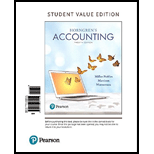
1)
Journal:
Accounts are debited to increase balances of assets and expenses and credited increase the balance of incomes and liabilities
To Prepare:
Journal Entries for November and December 2018.
2)
T- Account
It is a graphical representation of the postings made to the accounts during a reporting period.
It helps in analysis of the transactions impacting the accounts.
To Prepare:
T-Accounts for each of the entries.
3)
T-Account:
It is a graphical representation of the postings made to the accounts during a reporting period. It helps in analysis of the transactions impacting the accounts.
To indicate:
Posting to T-Accounts
4)
A trial Balance is a list of the balances of various Assets, Liabilities, Expense and Revenue Accounts. It helps in evaluating the arithmetical accuracy of financial transactions and postings during a reporting period and serves as the starting point in the preparation of financial statements.
To prepare:
Trial Balance as at 31 December 2018
5)
Financial Statements of an Entity
Financial Statements are financial records of the entities transactions for a given reporting period and indicate the financial health of an entity. They comprise of:
1. Income Statements,
2. Balance Sheets and,
3.
Prepare Income Statement for the year ended 31 December 2018.
6)
Statement of Owner’s Equity.
A statement of owner’s equity is a representation of all the capital introduced and withdrawn during a particular reporting period. It also represents the closing balance of the capital invested in a business.
To prepare:
Statement of Owner’s Equity for the year ended 31 December, 2018,
7)
Financial Statements of an Entity
Financial statements are financial records of the entities transactions for a given reporting period and indicate the financial health of an entity. They comprise of:
1. Income Statements,
2. Balance Sheets and,
3. Cash flow statements.
Balance Sheets list the closing balances of assets and liabilities after giving effect to the operations for a reporting period. Assets and liabilities are grouped together based on their nature and life.
To prepare:
8)
Debt Equity Ratio
It is a measure of the proportion of how much debt has been used to finance the equity and operations of the business.
The lower the ratio the better. Higher Debt equity ratio represents a highly leveraged business and can also indicate higher interest payments and lower profitability.
The Debt Ratio for the year ended 31 December 2018.
Want to see the full answer?
Check out a sample textbook solution
Chapter 2 Solutions
Horngren's Accounting, Student Value Edition Plus MyLab Accounting with Pearson eText -- Access Card Package (12th Edition)
- A firm has a market value equal to its book value. Currently, the firm has excess cash of $1,000, other assets of $5,500, and equity of $6,500. The firm has 650 shares of stock outstanding and a net income of $600. The firm has decided to spend half of its excess cash on a share repurchase program. How many shares of stock will be outstanding after the stock repurchase is completed? a. 625 shares b. 640 shares c. 600 shares d. 630 shares e. 615 sharesarrow_forwardProvide correct answer general accounting questionarrow_forwardanswer plzarrow_forward
- The controller of Afton Manufacturing has collected the following monthly expense data for use in analyzing the cost behavior of maintenance costs: ⚫ January: $2,800 and 3,500 machine hours • February: $3,200 and 4,200 machine hours ⚫ March: $3,800 and 6,000 machine hours ⚫ April: $4,500 and 7,500 machine hours • May: $3,600 and 5,200 machine hours • June: $5,200 and 7,000 machine hours Using the high-low method, determine the estimated fixed cost element and the variable cost per unit of machine hour.arrow_forwardSubject general accountingarrow_forwardFinancial accountingarrow_forward

 AccountingAccountingISBN:9781337272094Author:WARREN, Carl S., Reeve, James M., Duchac, Jonathan E.Publisher:Cengage Learning,
AccountingAccountingISBN:9781337272094Author:WARREN, Carl S., Reeve, James M., Duchac, Jonathan E.Publisher:Cengage Learning, Accounting Information SystemsAccountingISBN:9781337619202Author:Hall, James A.Publisher:Cengage Learning,
Accounting Information SystemsAccountingISBN:9781337619202Author:Hall, James A.Publisher:Cengage Learning, Horngren's Cost Accounting: A Managerial Emphasis...AccountingISBN:9780134475585Author:Srikant M. Datar, Madhav V. RajanPublisher:PEARSON
Horngren's Cost Accounting: A Managerial Emphasis...AccountingISBN:9780134475585Author:Srikant M. Datar, Madhav V. RajanPublisher:PEARSON Intermediate AccountingAccountingISBN:9781259722660Author:J. David Spiceland, Mark W. Nelson, Wayne M ThomasPublisher:McGraw-Hill Education
Intermediate AccountingAccountingISBN:9781259722660Author:J. David Spiceland, Mark W. Nelson, Wayne M ThomasPublisher:McGraw-Hill Education Financial and Managerial AccountingAccountingISBN:9781259726705Author:John J Wild, Ken W. Shaw, Barbara Chiappetta Fundamental Accounting PrinciplesPublisher:McGraw-Hill Education
Financial and Managerial AccountingAccountingISBN:9781259726705Author:John J Wild, Ken W. Shaw, Barbara Chiappetta Fundamental Accounting PrinciplesPublisher:McGraw-Hill Education





